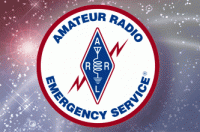|
Welcome,
Guest
|
TOPIC:
VHF/UHF Go Box Decisions 10 years 11 months ago #218
|
Hi Everybody,
I am very excited about what John B. at Quicksilver Radio has done by putting the "Deluxe Grab 'n' Go Kit" together for sale, and I'd like to share some thoughts with you from my ARES DEC perspective. Disclaimer: I have been using my own Home-brew version of this kit for several years. It resides in a bright Orange insulated Lunch box - as seen at the 2012 Nutmeg Hamfest. A Good Place To Start This "kit" (as offered) can fulfill the LOCAL VHF/UHF communications needs of field stations during ARES Drills and Public Service Events working Simplex, or using local working Repeaters (aka: a "Blue Sky" event), with one frequency at a time receiving capability. - It is great for "on the go" Amateur Radio Fun! Taking off the Rose Colored Glasses When considering this kit concept, we need ask the hard question, "Will it meet the needs of our ARES mission... "When All Else Fails"? An Epiphany As a result of Hurricane Sandy, I realized a foundational (and sobering) truth. "When All Else Fails", we are no longer in an "emergency". We have hit "DISASTER". Let that sink in to your brain for a few moments, and then consider the ramifications.... YIKES! Plan For The Worst, and Hope For The Best In ARES, we need to “plan for the worst and hope for the best”. This means thinking, planning, and equipping ourselves for those "Black Sky" events when our world goes “dark” (no electricity) and repeaters go silent due to: lack of power, an antenna flying away, or the tower falling down. When it comes to "Black Sky" ARES Events and Drills (i.e. no Repeater), we will be using: - VHF/UHF FM SIMPLEX (Voice), - VHF Data Communications (WINLINK Express), - HF NVIS (Near Vertical Incidence Skywave) SSB communications (Voice) on 40m. and 75m. - HF Data Communications (WINMOR). Communication Requirements Over the summer of 2012, CT ARES - Region 2 conducted a series of tests both during the newly instituted annual CT Statewide Exercise (“EPPI”) and independently. Our findings closely follow the suggestions found in the new Amateur Radio Public Service Handbook from ARRL. See: ctaresregion2.org/forum/general-ares-dis...lic-service-handbook Selectable VHF/UHF Radio Output Power 5 to 50 Watts (25W upper minimum, more is better) - Use a Mobile Radio, or add an external Amplifier to your HT. True 2 Frequency Simultaneous Receive We need a radio that can receive on two frequencies (VHF/UHF, VHF/VHF, UHF/UHF) at the same time to permit monitoring a secondary frequency. - As far as I know, none of the inexpensive Chinese radios do this. They have some sort of work-around (e.g. “Dual Watch”) that is less than satisfactory. Battery Capacity A SLA"Deep Cycle" battery with sufficient Ampere Hours ("AHr" or "Ah") capacity to support the increased wattage for at least one 12 hour shift and not be discharged more than 50%. But.... A Lithium Iron Phosphate (LiFePO4) battery is lighter and has less of a drop of voltage over time, and can be discharged up to 80%. www.ctaresregion2.org/forum/batteries/58...next-battery-lifepo4 Planning: - Field Station @ 25W = Battery with capacity of 50 AHr. - Net Control @ 25W = Battery with capacity of 150 AHr. (or, 2 batteries @ 75 AHr each.). See: Choosing The Right Size Battery www.ctaresregion2.org/forum/the-go-box/1...ght-size-battery#116 Antenna - A dual band VHF/UHF GAIN antenna mounted, in the clear, at a minimum of 20' AGL (Above Ground Level). This, when unable to access a roof, will increase Line of Sight (LOS) distance and improve the quality of our signals over challenging terrain. See: ctaresregion2.org/forum/antenna-central/...st-tripod-antenna#78 and ctaresregion2.org/forum/antenna-central/...station-set-2012#106 The Right Coax Cable for the Job - Use a coax cable that will get the most signal to the antenna. For VHF/UHF Field Use, I recommend choosing a Low-Loss Bury/Flex coax (similar performance to LMR-400 Flex) as a good compromise of performance and durability vs. cost. See Chart (scroll down) at: www.qsradio.com/Coax%20and%20ladder%20line.htm Strain Relief Be sure to secure the coax to the mast near the antenna connection and part way down the mast. - You may also want to secure the coax to a fixed surface near your radio (e.g. a table leg) to prevent the coax pulling the radio off the table. - Electrical tape works well, as to bungee cords. BOTTOM LINE While the 5 Watt radio has a role to play, we need to acknowledge its limitations and properly equip ourselves for "Black Sky" events with higher power options (25+ watt amp. or mobile radio) and better antennas.
The following user(s) said Thank You: KB1ZYH
|
|
Please Log in or Create an account to join the conversation.
Last edit: by WA1SFH. Reason: Updated to reflect the LiFePO4 batteries now on the market and general clarity.
|
VHF/UHF Go Box Decisions 9 years 8 months ago #452
|
Information and links are all great and confirm my direction.
|
|
Please Log in or Create an account to join the conversation. |
Time to create page: 0.137 seconds
